CMD DENTIST CENTER FOR PATIENTS IN MUNICH
The CMD Centre Munich-City is integrated into the practice of the specialists dentists in the Asamhof and deals with diagnosis and therapy of functional disorders of the masticatory organ. Modern diagnostic and therapeutic concepts, interdisciplinary approaches and continuous further training in this field determine our philosophy. Treatments are carried out according to the guidelines of our professional societies DGZMK and DGFDT. Dr Prokhorenko qualifies as a specialist in CMD or functional diagnostics through his numerous further training courses and curricula in this field, including CMD training with Prof. Axel Bumann.
The most important information about CMD treatment at a glance
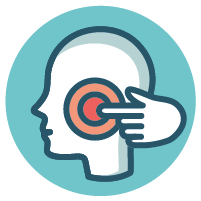
CMD
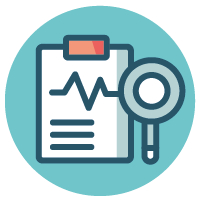
Diagnostics
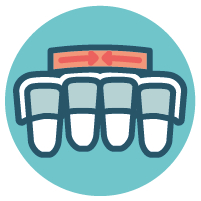
splint therapy
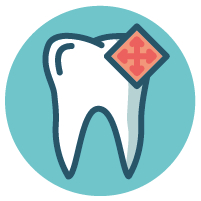
Interdisciplinary therapy
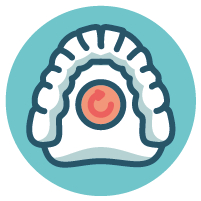
Prosthetic follow-up therapy
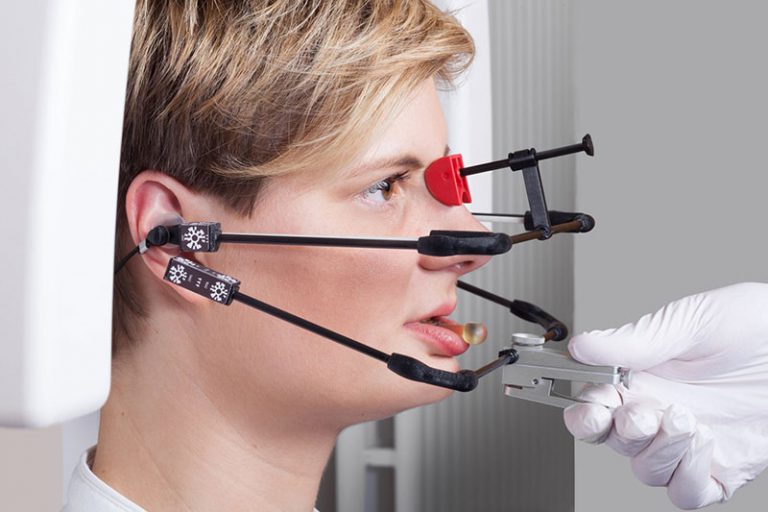

CMD = Craniomandibular Dysfunction
Malfunctions of the temporomandibular joint have been described in the past in many, often confusing ways, e.g. myoarthropathy, Costen syndrome, etc. Today the term CMD (cranio-mandibular disorder, i.e. craniomandibular dysfunction) is used. This term is purposeful, as it not only puts the temporomandibular joints in the focus of diagnostics and therapy, but also includes the musculoskeletal system. It thus describes a complex relationship between the masticatory musculature, the temporomandibular joints and the adjacent structures. Malfunctions of the temporomandibular joint can cause disorders and pain in the entire spinal column - from the head to the pelvic region - but the reverse is also conceivable. Neurological dysfunctions such as tinnitus and dizziness can also have causes in the masticatory muscle-jaw joint complex. CMD problems have many facets. Therefore it is of utmost importance to make an exact tissue-specific diagnosis, i.e. to find out exactly which structures are diseased or damaged and why. This involves finding a cause vector in the masticatory organ that is responsible for the complaints. Only when all the influencing factors have been recorded, evaluated and the diagnoses have been made can a targeted dental therapy be planned by a specialist.

Diagnostics of the jaw
Medical history
Many CMD patients have had a long ordeal. A detailed anamnesis usually provides initial indications of the causes of the complaints and helps to evaluate the findings.
Occlusal findings
In addition to a dental report (tooth status), we also check static and dynamic occlusion to detect occlusal vectors.
Disturbances of the nerves
Simple comparative tests of the relevant innervation may indicate nerve disorders.
Movement
Movement tests are important to quickly detect abnormal movements.
Passive compressions/tractions and translations
Joint play techniques indicate load vectors and restriction vectors in the temporomandibular joint. They are the most important tests to assess the temporomandibular joint with joint surfaces, capsule and discus.
Muscles
The most important muscle groups are examined for pain reactions by touch and isometric tension.
Cracking
By means of special joint play techniques, different types of cracking as well as the position and shape of the discus can be determined reliably.
teeth grinding / bruxism
In addition to the identification of grinding facets within the scope of an occlusion analysis, it is possible to show the bruxism activity and involved tooth groups via diagnostic splints.
Imaging methods
Suitable imaging techniques are often necessary for a reliable assessment of the structures involved:
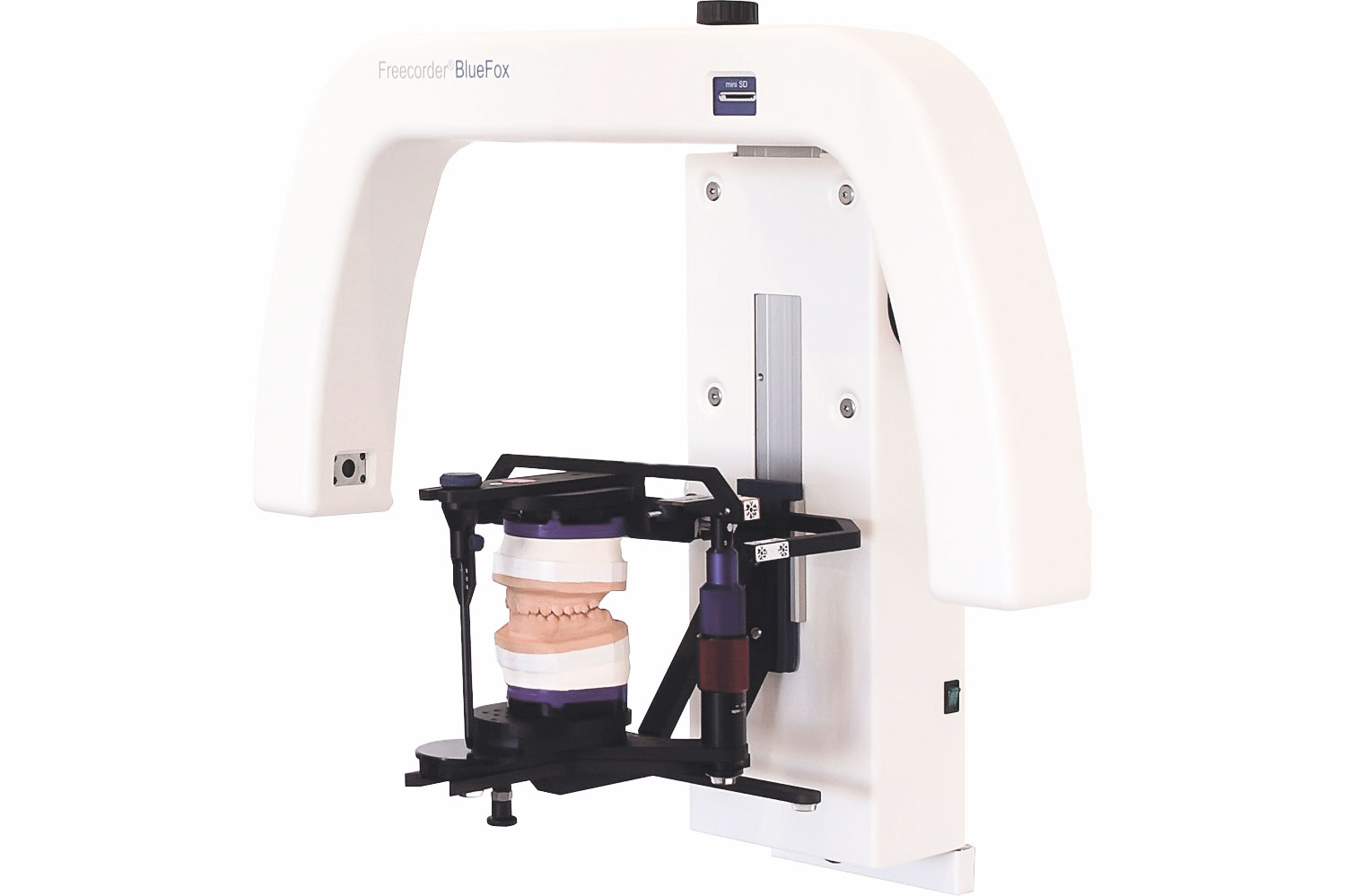
MRI
Magnetic resonance imaging is the best method to assess soft tissue structures of the temporomandibular joint, including the temporomandibular joint capsule with disc, ligaments (bilaminar zone) and muscles. Position, condition and degeneration can be detected.
DVT
Digital volume tomography is a modern procedure (comparable to a small computer tomography) to display bony structures - also in 3D. It may be necessary to determine the degree of degeneration of the upper and lower joint and the position of the condyle.
Physiotherapeutic/osteopathic/orthopedic clarification
The first physiotherapeutic findings can already be made during an initial examination in our practice. If positive findings occur, depending on the need for clarification, cooperation with phsyiotherapists, ostheopaths or orthopaedists may be necessary. We have a network of established specialists for this purpose.

Splint therapy as a CMD treatment method
In the history of dentistry, countless types of splints have been developed and published, which were intended to bring painlessness to CMD-plagued patients quickly and in a targeted manner as a treatment method. However, it is noticeable that all splints are one-way-spilnts, which means that one single splint design should solve all problems of CMD. This is, however, in complete contradiction to the established knowledge that a complex of problems is hidden behind the term "CMD". This insight must inevitably make one doubt that a single type of splint can be a target-oriented therapeutic tool. However, a target-oriented therapy and treatment by a specialist requires exact, individual diagnostics. Only when it is clear which structure in the cranio-mandibular system is diseased or disturbed, can an appropriate course of therapy be taken. We determine these structures within the framework of manual structural analysis (see Diagnostics), which is the basis for a successful splint therapy that is strictly oriented to the individual needs of the patient.
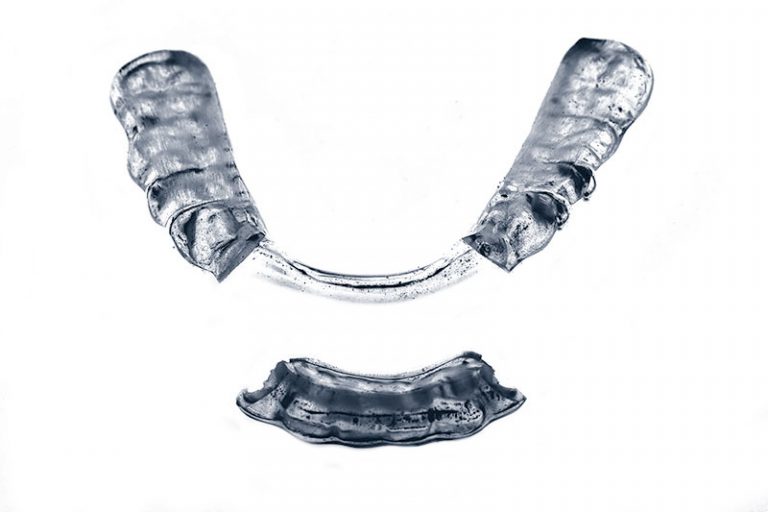
The selection of the therapy concept
Adaptative concepts aim at a freedom from symptoms without a change in the bite position, compensatory concepts result in a change in the bite position and usually require follow-up therapy (e.g. grinding, orthodontics, prosthetics)
Task of the rail
E.g. elimination of occlusal vectors, change of vertical dimension, change of dynamic occlusion, change of condyle position, stabilization of condyles
Occlusal design
Position of the condyles (jaw joint head)
For example, setting the condyles in neuromuscular centric, practitioner or patient-determined position.
Optoelectronic measurement (Freecorder Bluefox)
By accurately measuring your jaw relations and movements using the latest optoelectronic methods (Freecorder Bluefox), we can accurately record them and transfer them to your splint, taking into account the therapeutic parameters.

Interdisciplinary therapy
Interdisciplinary cooperation is an important component of our therapy concept. We work together with proven specialists from the fields of physiotherapy, osteopathy, manual therapy and orthopaedics. Depending on the need, we refer our patients to the appropriate practitioner. Orthodontics or pain therapy can also play a role.
This cooperation concerns
Orthopaedic indications (e.g. spinal column, blockages)
Osteopathic indications (e.g. malposition of the pelvis)
Physiotherapy and manual therapy indications (e.g. mobilisation of muscles and ligaments)
Orthodontic indications (e.g. malocclusions in the front)
Neural therapeutic indication (e.g. nerve damage)
Clarification by ear, nose and throat specialist

Prosthetic follow-up therapy
Often a successful therapy can only be carried out with an accompanying change in the bite position. In order for patients to be able to go about their everyday life without a splint after successful splint therapy, the occlusion must be adapted to the new position of the temporomandibular joint. This can be done by grinding, build-up, orthodontics, or a combination of these. This occlusal position must first be "tested" before a definitive restoration can be made. This testoclusion can be done without grinding the tooth and without damaging the tooth, using so-called tabletops (small composite caps), which are glued occlusally to the teeth. These are almost invisible, chewing and speaking is possible as usual. After a trial period of at least 6 months without complaints, this testoclusion can be transferred to a definitive restoration, usually made of ceramic. (Therapy according to the guidelines of the professional associations DGZMK and DGFTD). Nowadays, orthodontic procedures can also be performed almost invisibly. So-called aligners (invisible braces) are used for this purpose.
Costs
The majority of functional treatments or splint therapies are not covered by the statutory health insurance companies. No general statement can be made for private insurances or additional insurances, as this depends on the individual contracts. The therapies are invoiced according to the German scale of fees for dentists (GOZ).
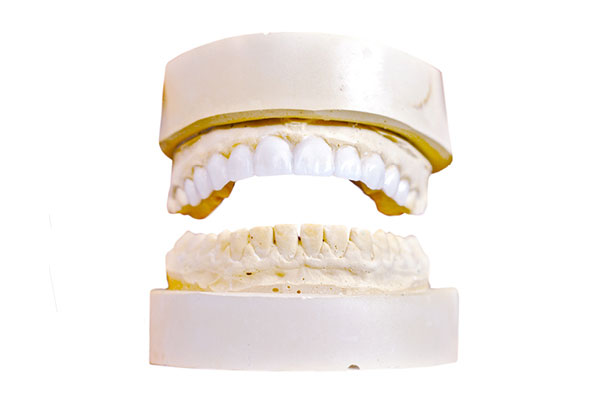
CMD CENTER FOR REMITTERS
As a specialist, Dr. Ihor Prokhorenko examines and treats patients referred by other doctors, dentists and therapists at the CMD Centre Munich-City. Due to the focus of his work, colleagues have been referring patients with functional disorders (CMD) for years, whether for assessment, diagnostics or therapy.
Our range of services
Functional analysis (clinical examination and extended manual structural analysis) at initial examination. In case of suspicion of CMD/functional disorders.
Instrumental functional analysis to refine diagnostics (e.g. optoelectronic methods to assess condylar position), if necessary, involvement of colleagues from other disciplines
Initial therapy/pain therapy; after consultation with the referring doctor and only at his request we carry out a targeted therapy (splint therapy/interdisciplinary therapy), this also includes the pre-treatment of CMD patients with planned orthodontics.
Long-term temporaries after change of bite position; if a change of bite position is accompanied by therapy, we can fix it with tabletops (occlusal veneers made of composite or PMMA) according to the splint occlusion (wearing time at least 6 months after DGZMK and DGFTD); this step is obligatory before a prosthetic restoration after change of bite position.
Prosthetic treatment after change of bite position and testoclusion is also only carried out at the request of the referrer. If the remitter wants to take over this step himself, we are still available for the function recall.
Model communication: For the communication and transmission of models/therapeutic occlusions/bite blocks we work with the common articulator systems SAM and Amann Girrbach, for other systems solutions are available.
A referral of patients and detailed written reports are a matter of course for us. For referrers there is a direct telephone extension to the treating physicians, a close collegial exchange is important to us!
A transfer/remittance form is available for download here:
Further information about our treatment can be found in the patient area. For up-to-date information on further education/courses in our practice, please contact us by phone.

